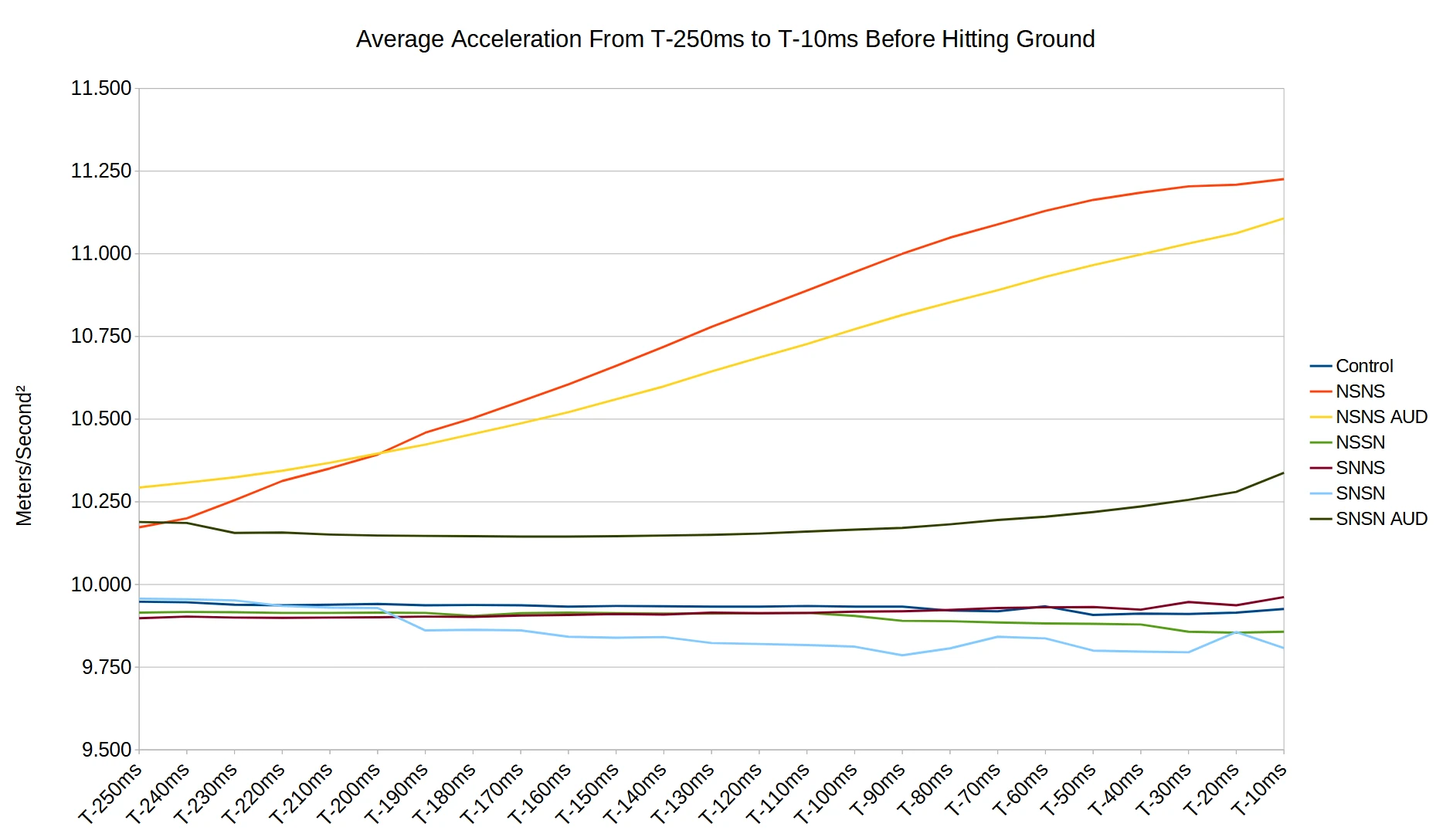09/14/2024 – APEC Open MIC
I provide experimental evidence that magnets in free-fall moving in the direction of north pole to south pole experience runaway acceleration violating the Equivalence Principle and is a result of inertial mass reduction.
Original Libreoffice PowerPoint Presentation
Twenty Five Trials Were Conducted Per Each Magnet Free-Fall Object
The objects tested were dropped from a height of slightly above two meters and consisted of the following:
- Control (Non-Magnetic Steel Washers)
- NSNS (Two magnets attractively coupled north pole on top and south pole on the bottom)
- NSNS AUD (Identical Configuration as NSNS but with the Arduino Upside Down)
- NSSN (Two magnets repulsively coupled north pole on top and on the bottom)
- SNNS (Two magnets repulsively coupled south pole on top and on the bottom)
- SNSN (Two magnets attractively coupled south pole on top and north pole on the bottom)
- SNSN AUD (Identical Configuration as SNSN but with the Arduino Upside Down)
Average Acceleration Rate of the Objects
The average acceleration rate of each object per trial was calculated by averaging the twenty five snapshots taken 10ms apart from 10ms before collision with the ground back to a total of 250ms before hitting ground.

Only Two Magnet Configurations Displayed Runaway Acceleration
For each T minus data point from T-250ms to T-10ms before impact the data was taken from the twenty five trials per object and averaged. This way we were able to see the acceleration rate across the twenty five trials for each 10ms snapshot starting 250ms before impact down to 10ms before impact with the ground.
The NSNS magnet object with two magnets attractively coupled moving in the direction of north pole to south pole was the only one to experience continuous acceleration until hitting the ground at an average 11.125 meters/second2 for both NSNS and NSNS AUD.
All others plateaued around 9.9 meters/second2 except SNSN AUD which plateaued around 10.15 meters/second2.

Three Potential Explanations
- The NSNS magnet’s field increases its gravitational mass causing it to fall faster.
- The NSNS magnet’s field decreases its inertial mass causing it to fall faster.
- The NSNS magnet’s field both increases gravitational mass and decreases its inertial mass causing it to fall faster.
Since the magnet objects consist of identical components they will all have virtually identical masses if inertial mass is being modified by the NSNS field otherwise if there is a difference in mass between the NSNS magnet and the other configurations then gravitational mass is being modified along with the possibility that inertial mass is being modified as well.
Masses Virtually Identical
| Masses in Grams | ||||
|---|---|---|---|---|
| NSNS | NSSN | SNNS | SNSN | |
| Aluminum Bolt | 7.642 | 7.648 | 7.658 | 7.658 |
| Aluminum Washers (Qty 2) | 1.282 | 1.318 | 1.296 | 1.296 |
| Aluminum Hex Nut | 1.136 | 1.14 | 1.142 | 1.142 |
| Reported RY04X0 Magnet Mass (Qty 2) | 760 | 760 | 760 | 760 |
| Magnet Object Total Mass | 771.096 | 771.094 | 770.968 | 771.132 |
Gravitational Mass Modification Not Responsible
If the NSNS magnet object was modifying gravitational mass to increase its free-fall acceleration the NSNS object would be the heaviest object weighed by the analytical balance and it is not.
Further Research Necessary
- Does the NSNS magnet used here ever plateau in its free-fall acceleration?
- Would a more powerful magnet achieve a higher plateau or just higher rates of acceleration per 10ms snapshot of the accelerometer?
Next Steps
- Conduct magnet free-fall tests from greater heights. My tests were done at heights slightly over two meters.
- Add fins to the body of the plastic shell to help prevent rotation or tumbling and keep the object moving north pole to south pole.
- Next attempt will be at six to seven meters.
- Possibly upgrade from N42 to N52 magnets of the same size if the N42 NSNS magnet object plateaus in its acceleration when dropped from a greater height.
Equivalence Principle Violated?
Bouncing ideas off of ChatGPT it determined that the only possible cause for a magnet to accelerate at 11.125 meters/second2, and increase of almost 1.25 meters/second2 over the acceleration rate caused by gravity, is if there was a very strong external magnetic field pulling the magnet to the ground. Earth’s magnetic field is far too weak to have that kind of effect on the NSNS magnet objects.
This of course was not the case, the only magnets involved were those tested in the free-fall experiments.
At this point, this author thinks inertial mass modification is the most likely answer even if there is no theoretical basis for such experimental data.
Keep Moving Forward
RFJ
Raw and Collated Data
Download Averaged Collated Data
Download Control Raw Data
Download NSNS Raw Data
Download NSNS AUD Raw Data
Download NSSN Raw Data
Download SNNS Raw Data
Download SNSN Raw Data
Download SNSN AUD Raw Data
